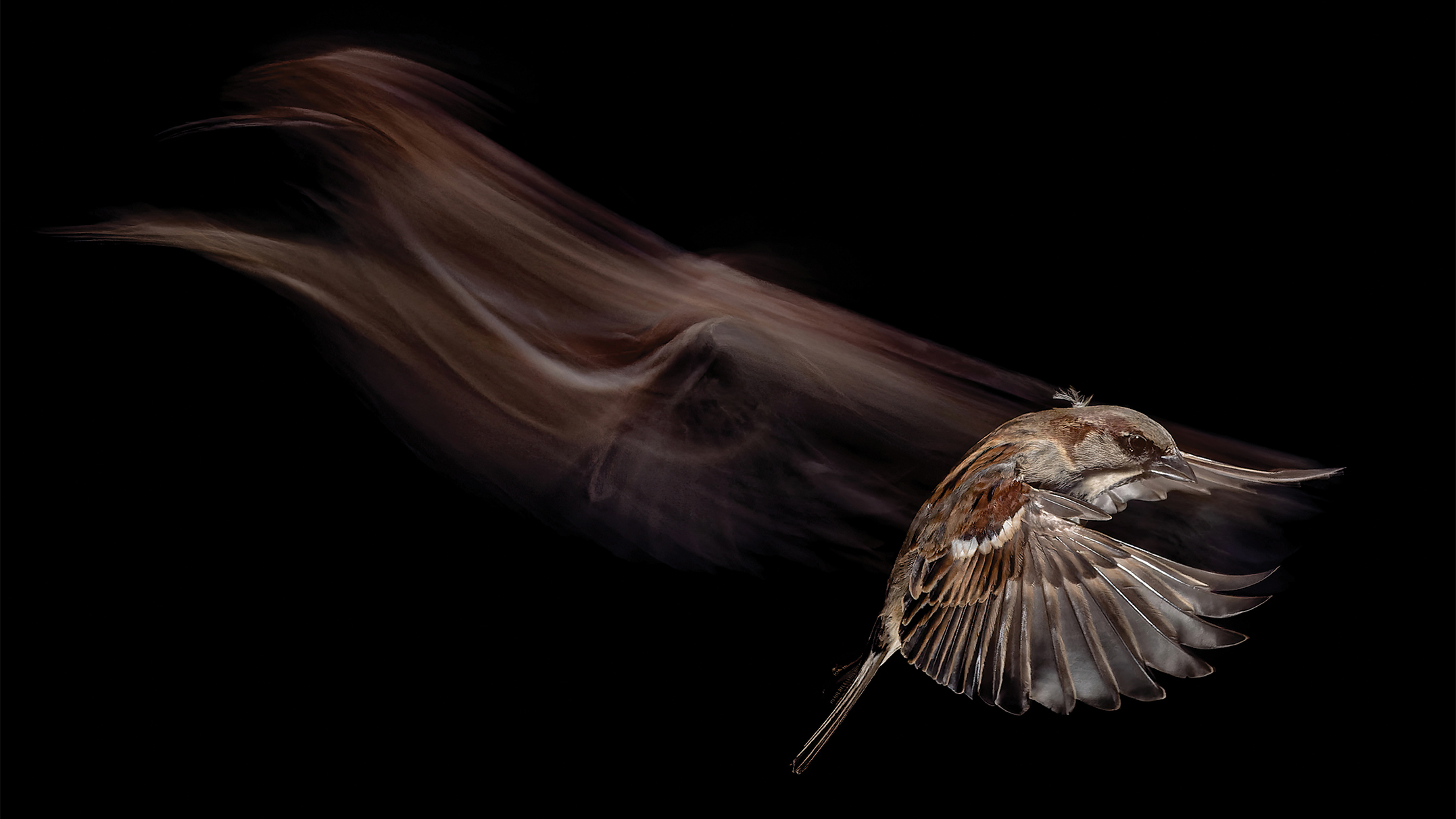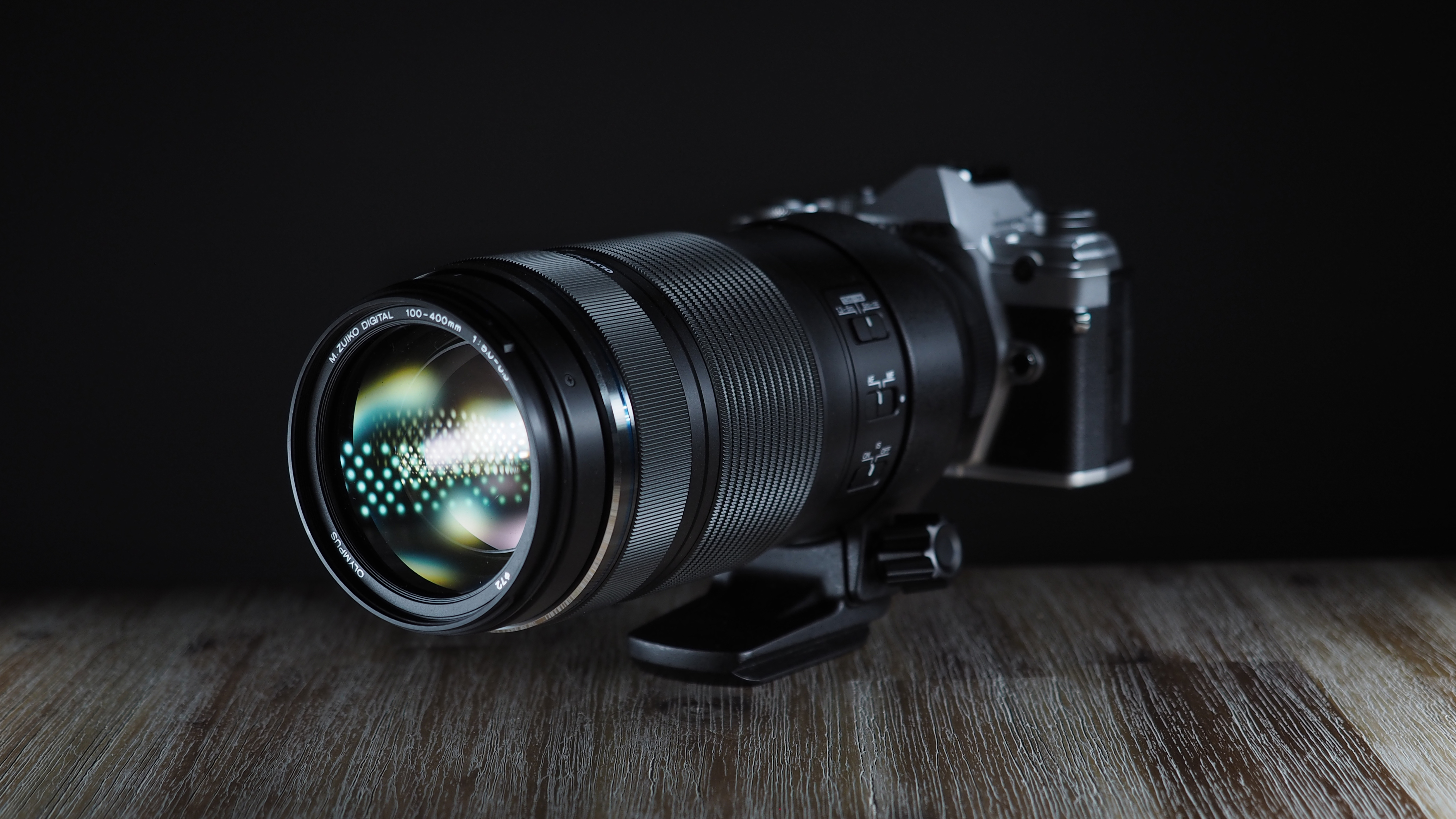
Wildlife photography for Martin Goff is all about escaping into nature and relaxing. As a Police crime scene investigator, he finds it helps to switch off, to forget what he has been dealing with that week and to reset his mind. He talks to us about how the photo "Soaring Sparrow" was taken, and why it works...
1. Different technique
Photography offers many more possibilities than just reproducing reality as we see it with our own eyes. Martin used the rear curtain slow sync flash technique to show the sparrow in focus while capturing its movement. This works with a slow shutter speed along with a burst of flash. “The ambient light captures the blurred motion trail of the moving bird while the flash freezes a well-lit image of the bird. The rear curtain part means the flash fires at the end of the exposure so the motion blur appears behind the bird and not in front of it,” says Martin.
2. Movement and speed
To show the bird’s motion, Martin captured the sparrow from a hide using four off-camera flashes. He positioned two flashes above and two below the flight path, on manual low power along with rear curtain sync with a slow shutter speed. “I used this technique to show a sense of movement and speed. The frozen image of the bird works well with the motion blur to help convey this. One without the other doesn’t work but, combined, it looks great,” he says.

Aperture: f/13, Shutter speed: 1/10sec, ISO: 400
Camera: Olympus OM-D E-M5 Mark III
Lens: Olympus 100-400mm f/5-6.3 IS
Accessories:
- Pixapro flash trigger
- 4x off-camera flashes
- Hide, hired from Tom Robinson Wildlife Photography
3. Balanced interplay
The art of combining motion blur with a sharp subject is to use the correct exposure time. The movement should be visible but not superimposed on the image so that the attention is on the main subject. “There was a lot of trial and error with different shutter speeds so I could capture just enough blur, but not too much,” says Martin. “As it was outside, there was constant variation in the natural daylight. This affected the manual flash power that was needed.”
4. High-contrast background
The effect of this photographic technique is best seen when there is a high contrast between the background and the subject. “I used a painted black background to really show off the blurred motion well against the darker background,” says Martin. To make the sparrow stand out even more and to enhance the overall effect of the image, Martin edited the photo in Lightroom. “In terms of processing, I just did the normal tweaks to exposure, saturation, sharpness, noise reduction and a bit of spotting on the background,” he says.







